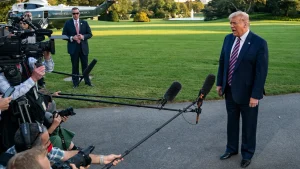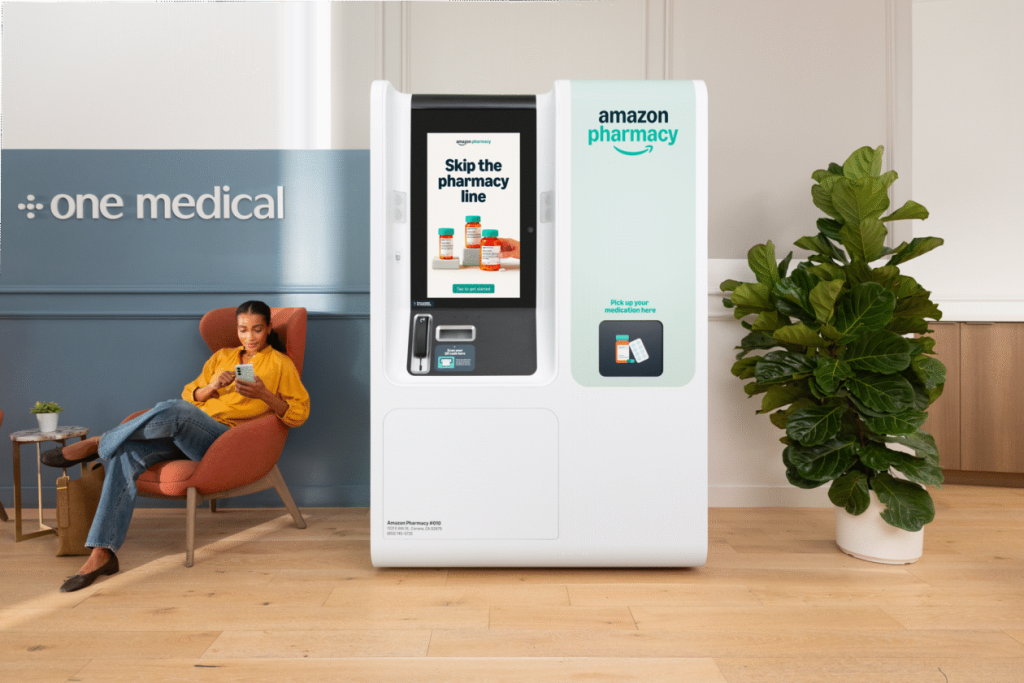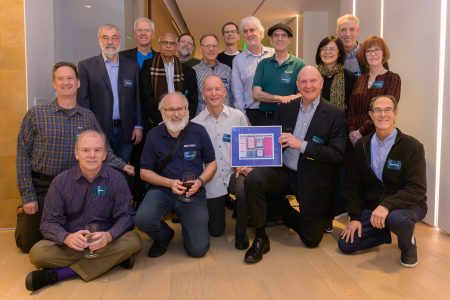Amazon’s Revolutionary Pharmacy Kiosks: Bringing Medication Directly to the Doctor’s Office
Amazon is bridging the gap between medical care and medication access with their innovative new Amazon Pharmacy kiosks, designed to transform how patients receive prescriptions after seeing their doctor. Beginning December 2023, these state-of-the-art dispensing stations will debut inside One Medical offices throughout the greater Los Angeles area, with plans for rapid expansion to additional locations shortly thereafter. The self-service kiosks represent a significant evolution in Amazon’s healthcare strategy, aiming to eliminate one of healthcare’s most common friction points: the separate trip to a pharmacy after a medical appointment.
The core vision behind these 1,700-pound, floor-secured kiosks is remarkably straightforward but potentially revolutionary: patients who receive prescriptions can have their medications dispensed on-site within minutes, rather than making an additional trip to a traditional pharmacy. After a provider writes a prescription, patients can choose to have it sent to Amazon Pharmacy for immediate pickup at the in-office kiosk. The process is streamlined through the Amazon app, where patients receive a QR code to scan at the kiosk, triggering the dispensing process that delivers their medication with a custom-printed label in just minutes. “This is not a watered-down version of a pharmacy,” explains Hannah McClellan, Amazon Pharmacy’s vice president of operations. “We have cut zero corners. Every single thing that’s available to you at a retail pharmacy pickup is available to you here. We really have just brought the pharmacy experience to your provider office, and made it incredibly fast and transparent.”
While leveraging cutting-edge automation, Amazon has carefully preserved the human element of pharmaceutical care. Each kiosk includes cameras that enable Amazon pharmacists to remotely verify medications before dispensing, maintaining professional oversight of the process. Patients can also connect with these pharmacists through video or phone consultations for medication guidance – preserving the crucial advisory role that pharmacists play in healthcare. The kiosks are stocked with a comprehensive array of commonly prescribed medications, including antibiotics, inhalers, and blood pressure medications, with inventory customized to match the prescribing patterns of each specific office location. However, controlled substances and medications requiring refrigeration are not available through this system, maintaining appropriate safeguards for specialized medications.
The introduction of these pharmacy kiosks represents a significant evolution for Amazon Pharmacy, which previously operated exclusively through home delivery of medications. This expansion into physical pickup points demonstrates Amazon’s commitment to meeting customers where they are and addressing varied medication needs through multiple channels. Security and privacy have been prioritized in the design, with the tamper-resistant kiosks featuring vibration sensors and surveillance cameras to prevent unauthorized access. Patient information is protected in accordance with HIPAA regulations, and Amazon emphasizes that the entire system has undergone extensive testing and regulatory review to ensure compliance with pharmaceutical standards. Importantly for consumers, there’s no additional cost to use the kiosks – Prime and non-Prime members alike pay only for their prescription medications, and the system accepts insurance just as traditional pharmacies do.
Amazon’s healthcare ambitions have expanded significantly in recent years, with strategic acquisitions forming the foundation for this integrated approach. The company launched Amazon Pharmacy in November 2020 following its $753 million acquisition of prescription-by-mail service PillPack in 2018. The $3.9 billion acquisition of One Medical in July 2022 (finalized in February 2023) further strengthened Amazon’s healthcare footprint by adding primary care capabilities. While the company did cut hundreds of jobs from both healthcare units in February 2024, these new kiosks signal Amazon’s continued commitment to healthcare innovation. McClellan indicated that Seattle, with its eight One Medical locations, could be “high on the list” for future kiosk placements, suggesting Amazon’s hometown might soon benefit from this new technology.
Beyond convenience, Amazon sees these kiosks addressing a significant public health challenge: medication non-adherence. Nearly one-third of prescriptions in the United States go unfilled each year, leading to poorer health outcomes and billions in preventable healthcare costs. By removing barriers to prescription fulfillment, Amazon hopes to increase medication adherence rates and ultimately improve patient health. “We do have many more kiosks ready to go,” McClellan told GeekWire, highlighting the scalability of the initiative. “I see One Medical as a launch pad for the kiosk, but I think they have runway far beyond One Medical, and frankly, far beyond primary care offices. There’s so many ways that they can drastically improve the pharmacy pickup experience today.” This vision suggests that Amazon’s pharmacy kiosks could eventually appear in various healthcare settings, potentially revolutionizing how Americans access their medications by making the process faster, more convenient, and seamlessly integrated with their medical care.














